Have you heard of knotweed pickles? Rose hip jelly made with multiflora rose? Garlic mustard pesto?

All of these are dishes that can be made using invasive species of plants.
But should you? Is cooking and preserving with invasive plants part of a problem that might make it a bigger one?
Jump to:
- Examples of Edible Plants that Might Be Invasive
- You CAN Make Food and Preserves with Invasive Plant Parts, But SHOULD You?
- Responsible foraging and use can help harm invasive plants
- Young and early harvests help stop the spread of invasives
- Something You MUST Do if You Cook or Preserve with Invasive Plant Fruits or Parts
- Some Things You Can Make with Invasive Plants
- One Thing You Should Definitely NOT Do with Invasive Plant Parts
- What’s Invasive Where You Live?
- Remember, the Real Goal is Invasive Eradication
Examples of Edible Plants that Might Be Invasive
There are all sorts of invasive plant species around the world. Most of the time, the problem was man-made. We think a plant is pretty or useful; plant it somewhere in the world where it doesn’t grow naturally and has few to no natural controls, and it quickly takes over an area, upsetting the local ecosystem and wildlife.
Every plant is native somewhere, and no plant is invasive everywhere, but there are several plants that emerge as both edible and invasive. A few examples include (but are nowhere near limited to):
- Japanese knotweed
- Multiflora rose bushes
- Prickly pear
- Garlic Mustard
- Japonica honeysuckle
- Some varieties of blackberry and other brambles, like Himalayan blackberries
Many of these make great and even very nutritious dishes. But that calls into question the morals of using them.
You CAN Make Food and Preserves with Invasive Plant Parts, But SHOULD You?
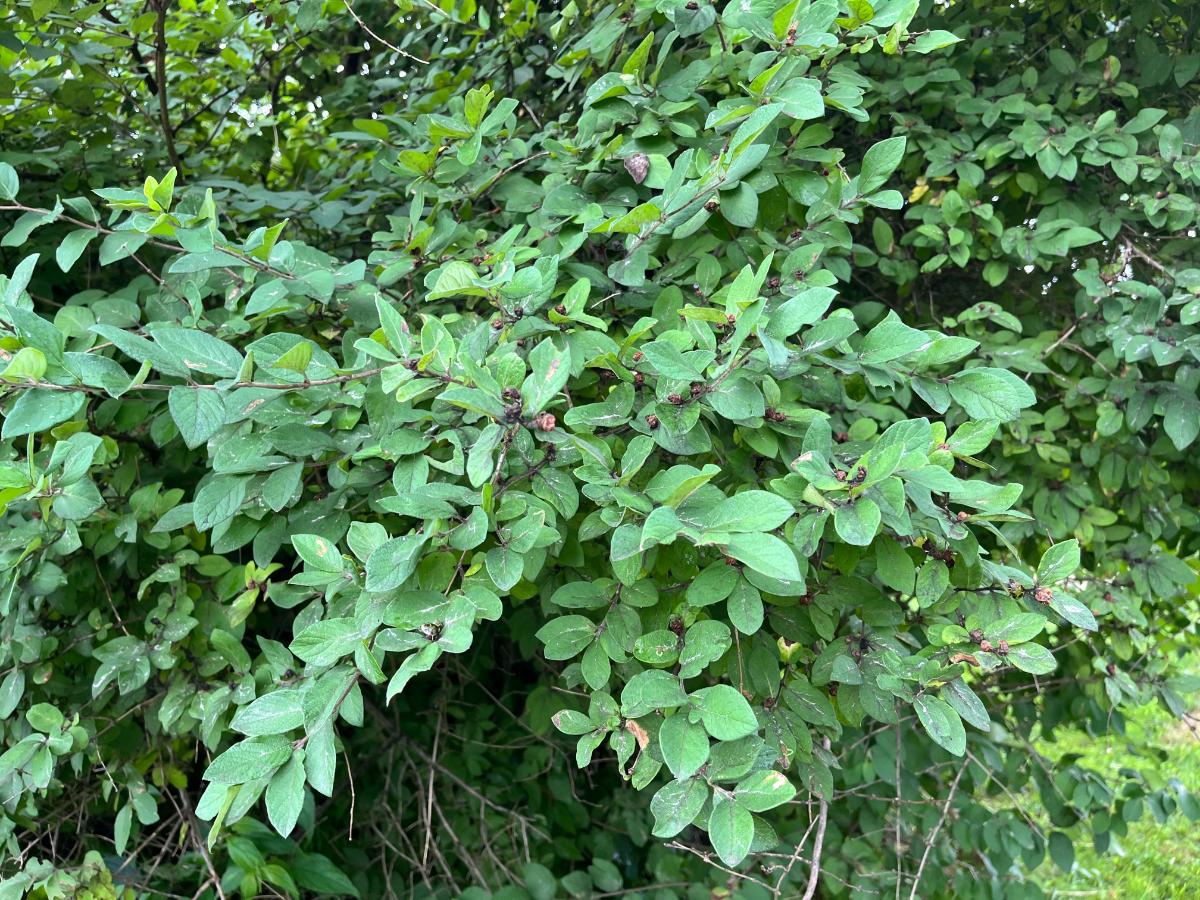
Most of the people in the know agree that foraging and eating from invasive plants is okay to do, as long as you are cautious enough not to make the problem bigger.
There are even recipe books written that include both plant and animal invasive species recipes.
The idea here is, “If you can’t beat them, eat them!”
Responsible foraging and use can help harm invasive plants
The premise is this:
If you forage carefully and responsibly, you are helping to cut back, stress, and damage invasive plants, and that’s a good thing.
You are also harvesting things like blossoms and berries and fruits of invasive plants. That keep them out of the mouths of birds and wildlife, which then accidentally spread those seeds, grow even more plants, and upset the local ecology even further.
While feeding birds and wildlife may sound like a good thing, it’s not, really, because the spread of invasive plants chokes out other natural food sources. This can have a lot of lasting effects, including leaving wildlife without essential natural plants to eat at critical times of the year.
Young and early harvests help stop the spread of invasives
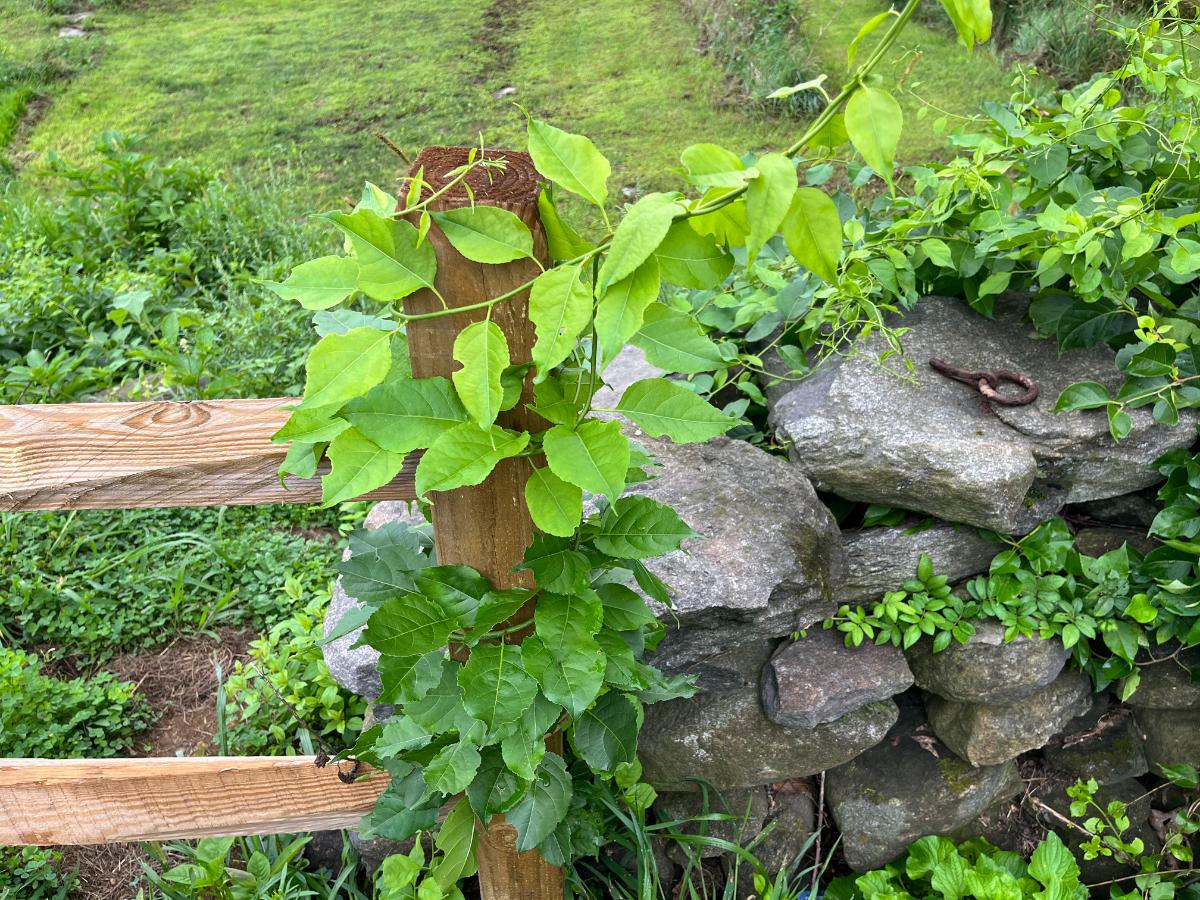
A lot of the plant parts that are useable as human food are things like small, young shoots (such as with Japanese knotweed, one of the worst and least controllable invasives).
Others are blossoms, fruits, and berries.
When we take young shoots, we are not letting the plant grow to maturity (or at least not the part of the plant that we’re harvesting), so that knocks at least that amount of plant out of the cycle.
When we use blossoms, the plants never get the chance to set seed, since the blossoms are what turn into fruit and seed. This is excellent control because the growth cycle doesn’t get close to where it can cause seed and plant spread.
When we use fruits and berries, we prevent birds and animals with larger flight and migration zones from eating them, and we help to reduce the spread from wildlife accidentally seeding the plants.
So yes. There are ways in which we can be helpful by using invasive plants as food.
Responsibility and care are key, though!
Something You MUST Do if You Cook or Preserve with Invasive Plant Fruits or Parts
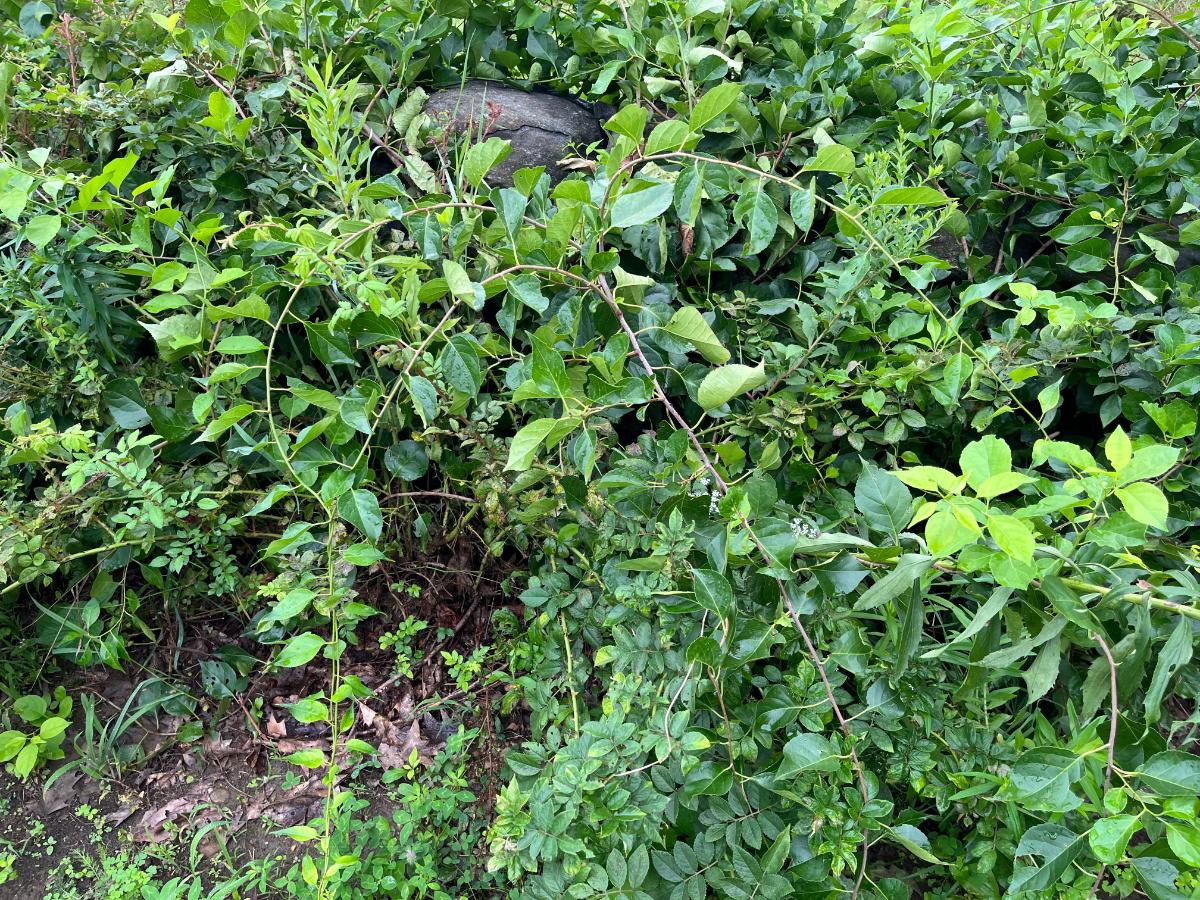
One thing that is absolutely imperative if you do choose to forage, harvest, and eat invasive plants (or prepare dishes or preserves with them), is to do so responsibly.
One of the most important parts of this is taking extra care when you dispose of trimmings, strained parts, and discarded food.
Make sure you do not throw this out in your compost or yard!
Make sure seeds are always bagged and thrown in the trash or burned completely! If burning, it must be burned down to ash, and you need to know whether the seed in question can survive and thrive with burning.
When foraging and harvesting, do no harm. Don’t drop or spread cuttings, some of which (like knotweed) can reroot if conditions are right and moist.
Some Things You Can Make with Invasive Plants
The list of things you can make with edible invasive plants seems almost as endless as the battle with those invasives.
Here are just a few examples of dishes people make and enjoy that use invasive plant species:
- Knotweed pickles
- Knotweed sorbet
- Knotweed mousse
- Knotweed Fruit Leather
- Knotweed relish
- Grilled knotweed spears (like asparagus)
- There are lots of recipes for knotweed here
- Multiflora Rose hip tea
- Multiflora Rose hip jelly
- Pestos, like Garlic Mustard Pesto
- Cobblers, like Himalayan Blackberry cobbler
- Wines made with hips or berries of species that are invasive
- Honeysuckle tea from the blossoms of invasive Lonicera japonica honeysuckle
- Honeysuckle infused oil
- Honeysuckle infused honey
One Thing You Should Definitely NOT Do with Invasive Plant Parts
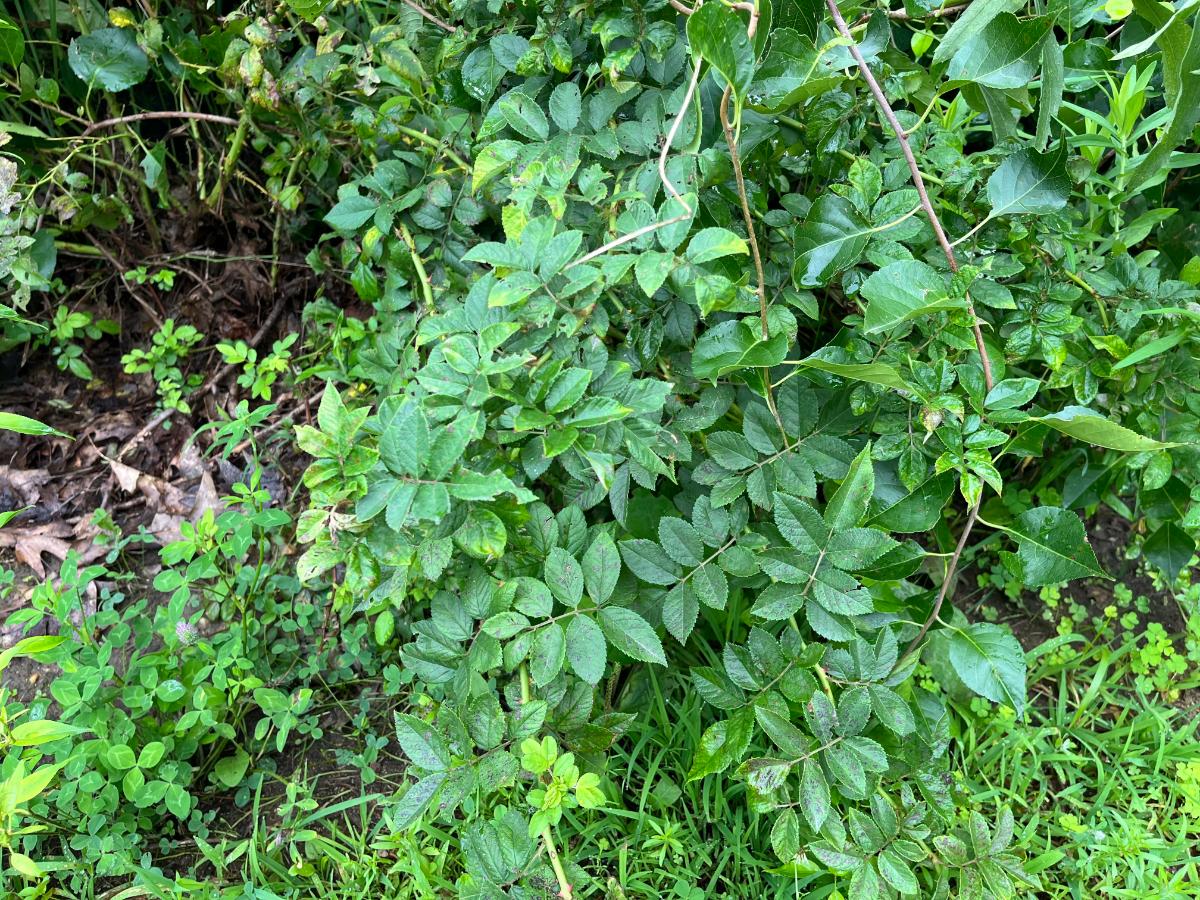
There is something you should never do in the home with any parts of invasive plants.
Don’t use invasive plants to decorate!
We won’t lie. Oriental bittersweet is a pretty plant, and it makes a beautiful vase filler, wreaths, swags, and fall arrangement accent for both indoors and out.
But when we decorate with things like these, all we do is save the seed and spread cuttings.
Both those seeds and cuttings can root very easily anywhere they land.
Birds may love your seasonal decor, too, and then they’ll eat those berries, ingest the seeds, and poop them out to start a new stand of this often highly invasive and destructive vine.
The same can be said for multiflora rose and so many other potentially invasive plants, too.
Just don’t decorate with invasives. Not any part of them. Not at all. There’s nothing in that process that will damage or kill the seed. The spread potential is too high.
Find something better and more locally environmentally friendly.
What’s Invasive Where You Live?

Invasive plants, as we’ve said before, are not the same everywhere you go.
There can be different reasons why a plant is invasive in one place and not another.
Winter, for example, is often a factor. Some plants that thrive invasively in the south are killed by winter in the north. Sometimes, a southern summer is what kills something that explodes in cold northern zones.
The takeaway here is that we all battle different invasive plants, and they’re not the same for everyone.
Get to know what is considered an invasive plant species where you live. This is important when you’re planting plants in your yard so you don’t inadvertently spread more invasives and cause more of an ecological problem.
It is just as important to know this when you are cooking or eating invasive plants. That way, you will know how best to prevent the spreading from seeds and discarded food or ingredients that used invasive plants, parts, or seeds in the mix.
Do your local ecosystem a huge favor and learn how to identify invasive species and what you should be taking extra care with when you forage, pick, prep, and preserve.
Remember, the Real Goal is Invasive Eradication
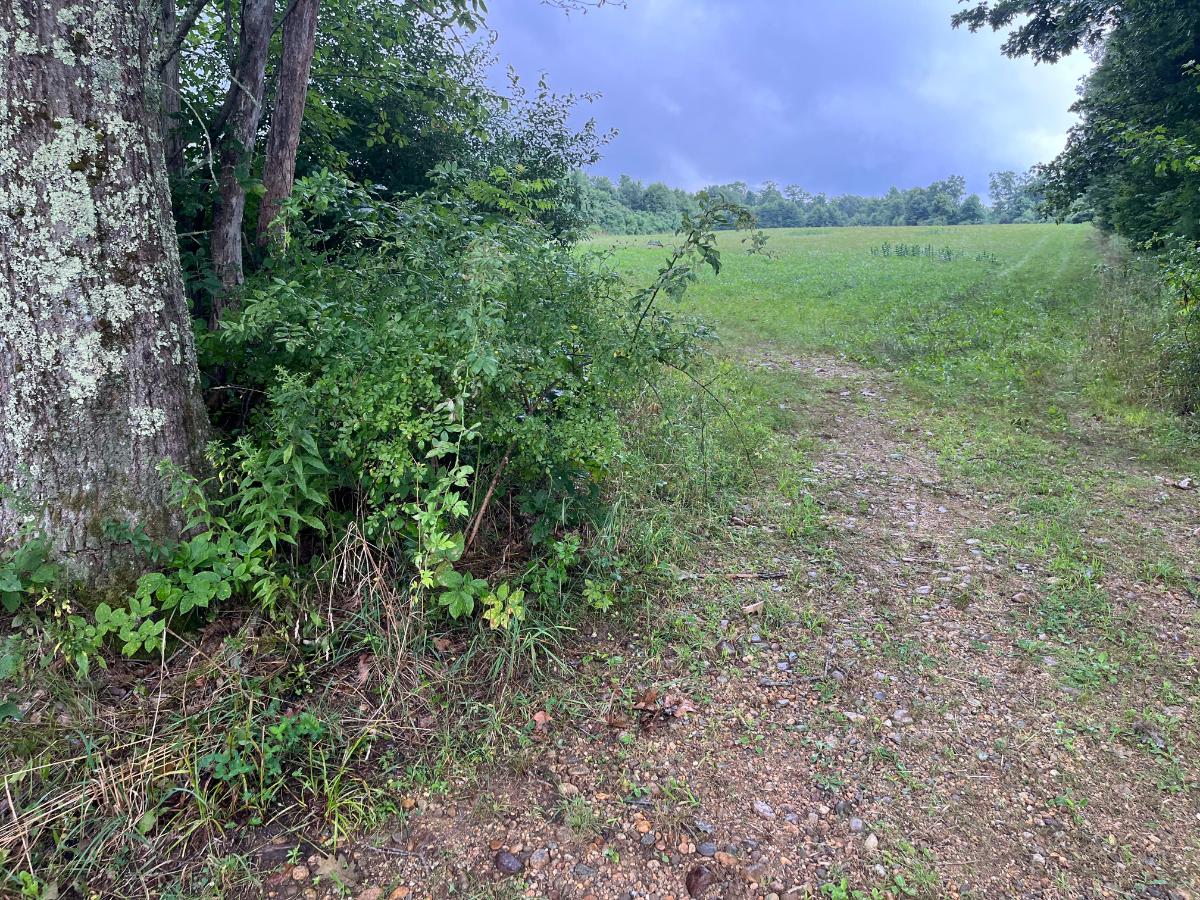
Even if you really come to like some of the dishes and preserves that you’re making with your local invasive species, don’t be tempted to propagate them.
Remember, the goal is to use it up, contribute to the killing and control of the plant, and help the environment as you help yourself.
It is not to grow more of it!
Invasive plants are extremely hard to control so truth be told, even foraging and cutting and using plant parts isn’t likely to be enough to eradicate them, but every bit that is responsibly done helps.
But if the day comes when we’ve made progress and eradicated an invasive species of plant, let’s let it stay that way. Find something else that is not harmful to make your jellies, jams, and Pestos with!

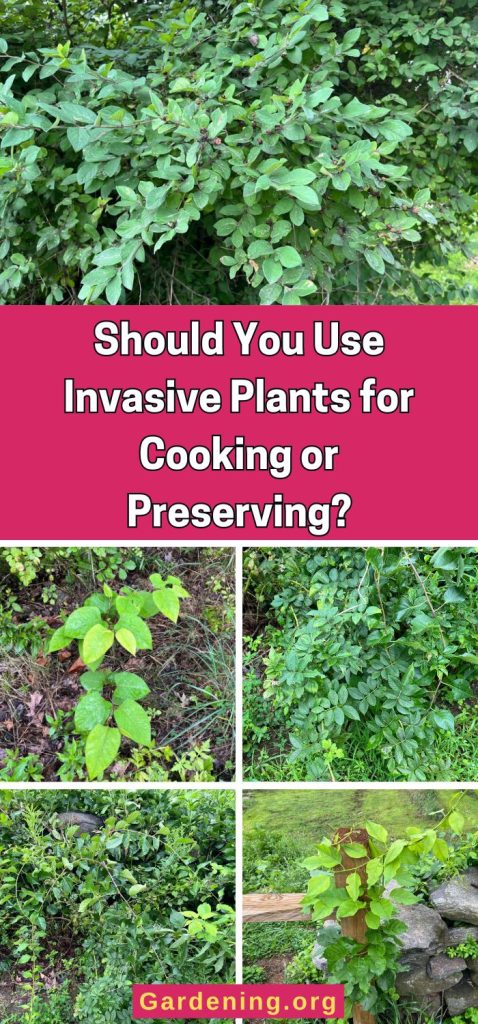

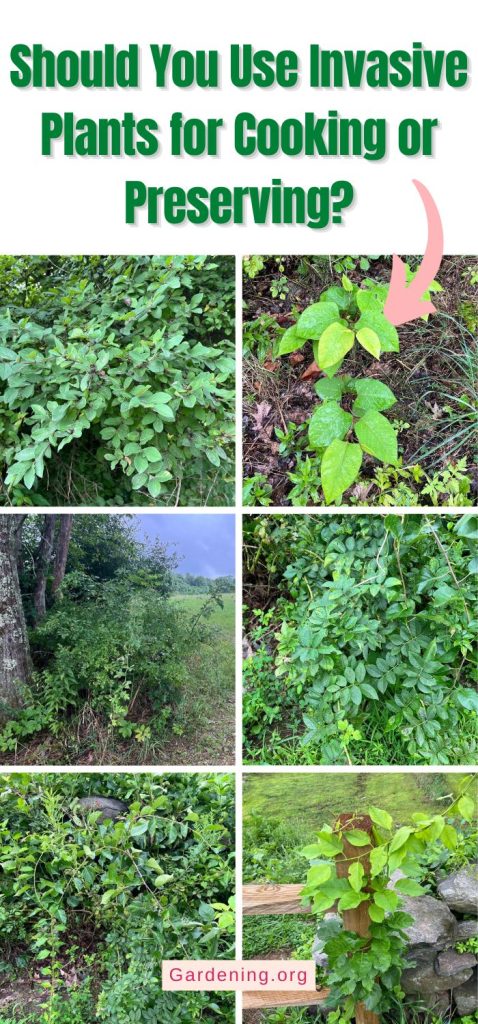
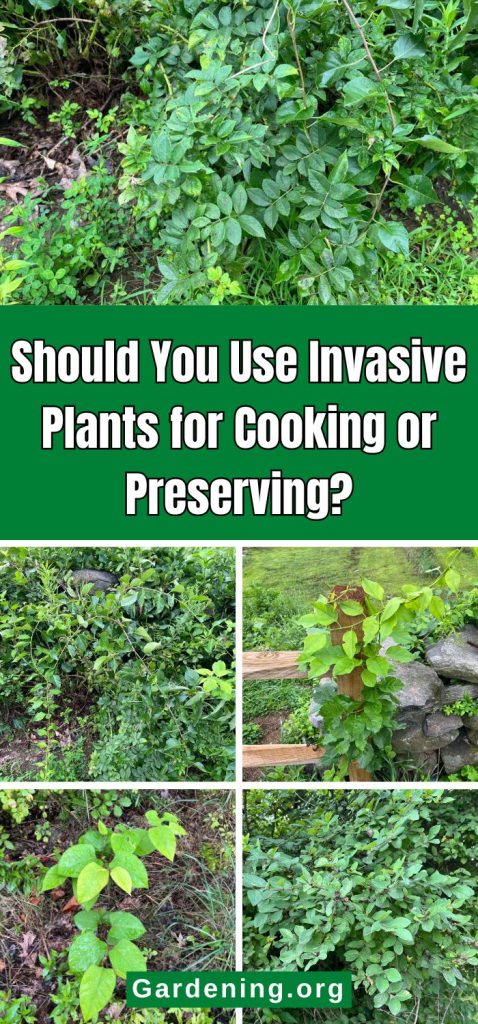




Leave a Reply